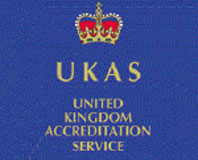Click HERE To Buy Elavil Online ↓
 Elavil for Migraine Prevention: Does It Work?
Elavil for Migraine Prevention: Does It Work?
What Is Elavil and How Does It Function?
Elavil, known generically as amitriptyline, began its medical journey as an antidepressant in the 1960s, quietly gaining a reputation for its wider benefits beyond mood disorders. As a tricyclic antidepressant (TCA), Elavil works primarily by increasing levels of certain chemicals in the brain—specifically serotonin and norepinephrine. These neurotransmitters are essential for regulating pain and mood, which is significant in the context of migraine prevention.
Unlike quick-fix migraine remedies, Elavil is typically used on a long-term basis to help reduce both the frequency and severity of migraines. Its ability to modulate how the brain perceives and processes pain makes it a unique option among migraine treatments. Many patients find that including Elavil in their regimen can open a new path to headache relief.
| Brand Name | Generic Name | Class | Main Action |
|---|---|---|---|
| Elavil | Amitriptyline | Tricyclic Antidepressant (TCA) | Increases serotonin and norepinephrine |
Why Elavil Is Considered for Migraine Prevention

For decades, doctors have turned to elavil—also known as amitriptyline—for its unique ability to calm both the mind and the nervous system. Originally developed as an antidepressant, elavil’s value goes beyond mood regulation, making it a compelling option for people battling chronic migraines. Specialists noticed that patients taking elavil for depression also reported fewer headaches, sparking curiosity about its preventive powers.
Elavil’s effectiveness lies in how it influences certain neurotransmitters, such as serotonin and norepinephrine, which play pivotal roles in both mood and pain signaling. By balancing these chemicals, elavil can help reduce the frequency and intensity of migraine attacks. Its broad impact on the nervous system is why many find relief, especially when other preventative methods have failed.
Furthermore, elavil isn’t just for those with a history of depression; it’s prescribed at much lower doses for migraine prevention. This makes it especially enticing for patients seeking an alternative to more conventional migraine therapies. Ultimately, its versatility and decades of clinical experience have solidified elavil as a trusted option in many headache specialists’ treatment arsenals.
Scientific Evidence Behind Elavil’s Effectiveness
Over the years, elavil has drawn attention for its potential to reduce migraine frequency. Clinical studies have shown that some patients experience fewer migraine attacks when using low doses of this medication. Experts think elavil’s effect stems from altering brain chemicals involved in pain transmission and mood. While not everyone responds the same way, research suggests that for certain individuals, elavil may offer substantial relief. This has led to its inclusion as a preventive option for migraine sufferers when other treatments fall short.
Potential Side Effects and Important Safety Concerns

When starting elavil for migraine prevention, some people notice tiredness, dry mouth, or weight gain—effects that can catch patients by surprise. Though these symptoms may lessen as your body adjusts, it’s important to track how you feel and report any persistent discomfort. Rarely, more serious reactions like changes in heart rhythm or mood shifts can occur.
Because elavil interacts with various other medications and underlying health issues, communication with your healthcare provider is vital. Share your complete medical history and current medication list to help prevent complications. Sticking to prescribed dosages and attending follow-up appointments ensures maximum benefit with the lowest risk.
Comparison: Elavil Versus Other Migraine Treatments
When considering migraine prevention, Elavil (amitriptyline) is often compared to newer medications like topiramate or propranolol. While Elavil is an older antidepressant, its ability to alter brain chemicals makes it effective for many patients. Unlike some other options, Elavil is affordable and widely available, but it can cause more drowsiness.
Other migraine treatments may work through different mechanisms or have fewer sedation side effects. Consulting a doctor helps tailor options based on your health needs and lifestyle.
| Medication | Common Use | Notable Side Effect |
|---|---|---|
| Elavil (Amitriptyline) | Migraine Prevention | Drowsiness |
| Topiramate | Migraine Prevention | Tingling, cognitive changes |
| Propranolol | Migraine Prevention | Fatigue, low blood pressure |
Tips for Discussing Elavil with Your Doctor
Starting a conversation about Elavil with your doctor can feel daunting, but preparation helps. Begin by sharing your migraine history, including frequency and previous treatments. It’s wise to ask specific questions about Elavil’s potential benefits and side effects in your case. If you have pre-existing conditions or take other medications, be open about these as interactions may occur. Finally, remember that your doctor’s guidance should factor in your personal goals and concerns, ensuring your treatment plan is truly individualized.





















